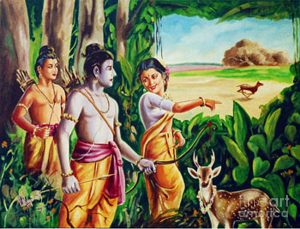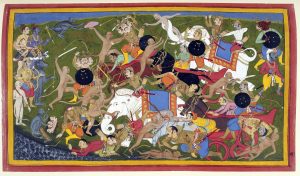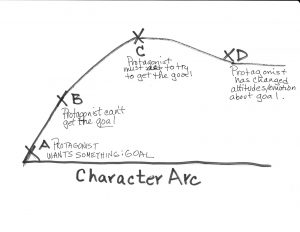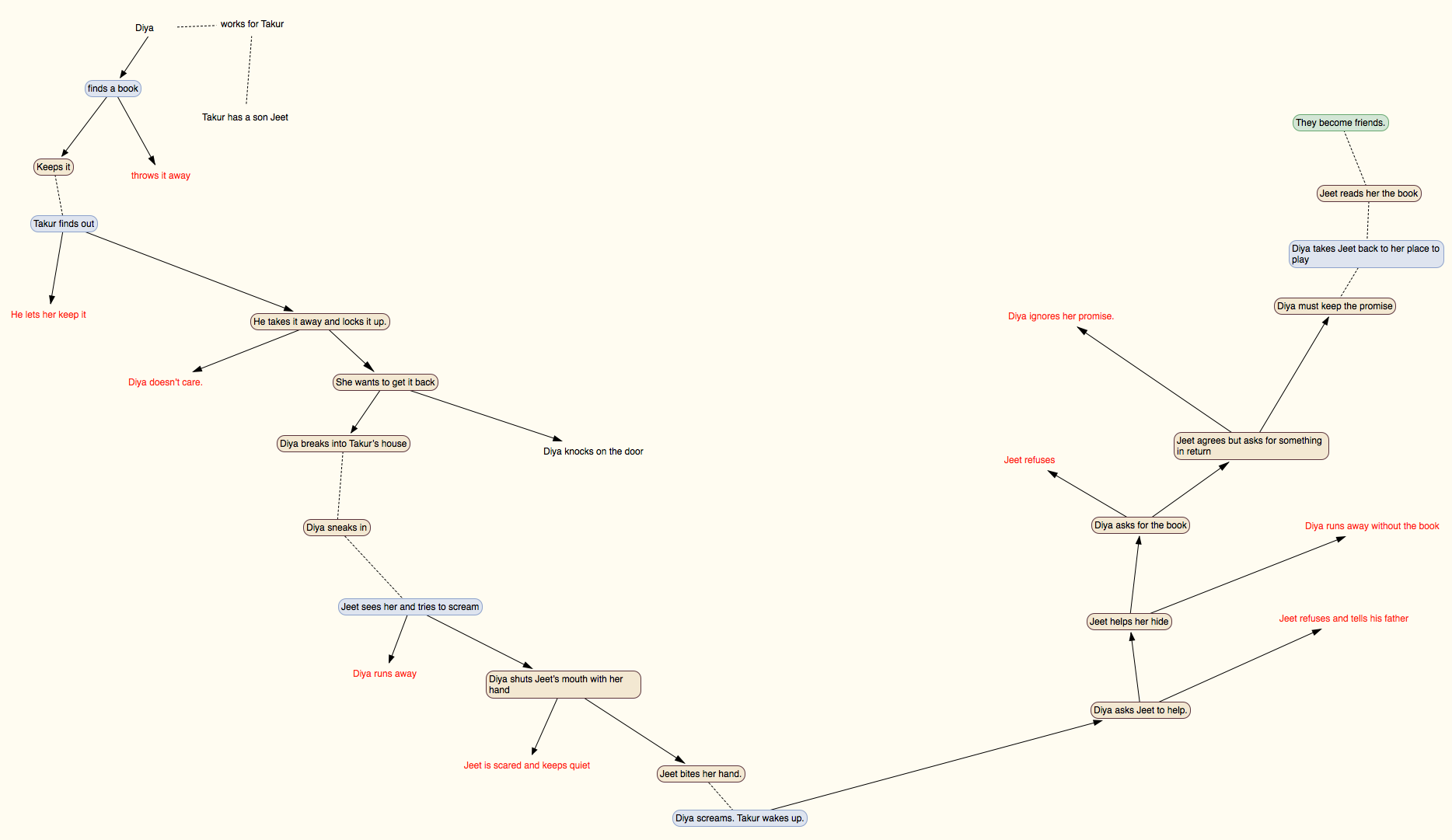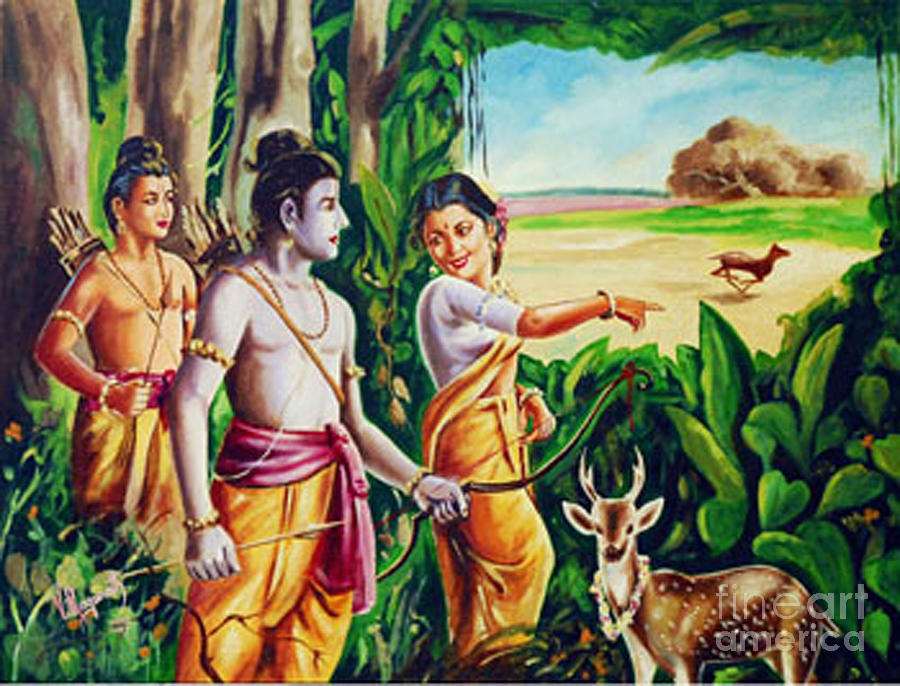
Did you enjoy writing list poems? I thought we could try something different this time around.
Many famous writers always say that stories are what happen to characters, when you land them in big trouble.
Ray Bradbury says in the Zen in the Art of Writing - “Plot is no more than footprints left in the snow after your characters have run by on their way to incredible destinations.” Joss Whedon says -“You take people, you put them on a journey, you give them peril, you find out who they really are.”
And if you have read stories from the Mahabharat, another epic story from ancient India, almost 2000 years ago, we realise this is true – exciting stories are full of twists and turns that happen to a character.
To make a story interesting, you need an interesting character. Someone who we like or admire or root for. Then we give him lots of problems – small problems to start with and they get bigger and bigger and bigger until the problem is so big that we are not sure if the character would win. Each time the character faces a problem – how he handles this problem tells us what sort of character he is. And it also adds to the excitement of a story.
For example – if Rama had refused to go to the forest and fought his brother for the throne, early on, we wouldn’t have the adventures in the forest or on the island of Lanka. Or if he hadn’t taken his wife with him to the forest, no one could have kidnapped her and again – there wouldn’t have been any battle.
So every time the character decides something, the story changes so it gets more interesting for the readers. Therefore as a writer you need to think like your character and take some difficult decisions at various turns in the story. Every decision he takes, will show us what kind of person he is. Every decision he takes must move the story forward either in a good way or in a bad way.
To illustrate how you can create a story based on a character and what happens to them, take the example of Diya. Let’s see if we can create a twisting and turning story for this character:
My character is Diya, a poor girl who collects old paper and bottles from bins to make some money for her family. She really wants to go to school. But she is not able to.
Diya finds a book in the rubbish. What does she do? She could either read the book or she could throw it in the recycle to get some money. So as a writer, I will make Diya keep the book so she could read it later.
But that causes problems. It should. The man who gives her the job (let’s call him Takur), finds out about the book. He takes it away and locks it in his drawer.
Now Diya She could either steal the book or she could forget about the book. Diya wants to read the book. So she decides to get into Takur’s house and get the book.
This should cause more problems. It should. When she goes inside through the window, someone sees her. It is Takur’s son, Jeet.
Jeet is going to shout. Diya must stop him. What should she do ? She has two choices – she could run away or she could put her hand over Jeet’s mouth. She decides to shut Jeet up. This should definitely create problems.
Now your reader is wondering what would happen next. Jeet bites her hand. Diya screams. Takur wakes up from his nap. He is coming down the stairs. Now Diya has two options again. She can either run away or ask Jeet to hide her.
As I said before Diya wants the book definitely. So she would ask Jeet to hide her. Jeet takes pity on her and hides her behind the sofa. Takur doesn’t see Diya.
When he’s gone, Diya asks for the book. Jeet knows where it is. But he wants something in return. Diya promises him whatever he wants and he hands over the book to her. Now Jeet says he wants to come with her to her place and play.
Can Diya take a rich boy back to her neighbourhood to play? Will Takur find out? If Takur finds out Diya won’t have a job. That means no food in her house for anyone. Not even her baby brother.
She could either refuse or she could keep her promise. So she decides to take Jeet back. And after they finish playing, Diya looks at the pictures in the book. She can’t read. Jeet reads it to her. And he promises to teach her how to read.
Now as you have seen, Diya needs to make tough choices. Stealing is not an easy choice to make. But all characters do not always do the right things. characters can never be perfect. They have to make mistakes. And hopefully learn from them.
But in the end when she has the most difficult choice – to keep a promise that could cost her the job or break a promise, she makes the noble decision. She takes Jeet with her.
Think about what would have happened if Diya had chosen differently? Would the story be different? Would we think differently about Diya?
I have represented this story as a decision diagram. Can you see the brown boxes – these are plot-twisting decisions. The red ones will stop the story abruptly.
So we want as many difficult “branches” and many brown decisions.
Can you draw a decision tree like this for a new story? This will help you think about the story before writing it.

